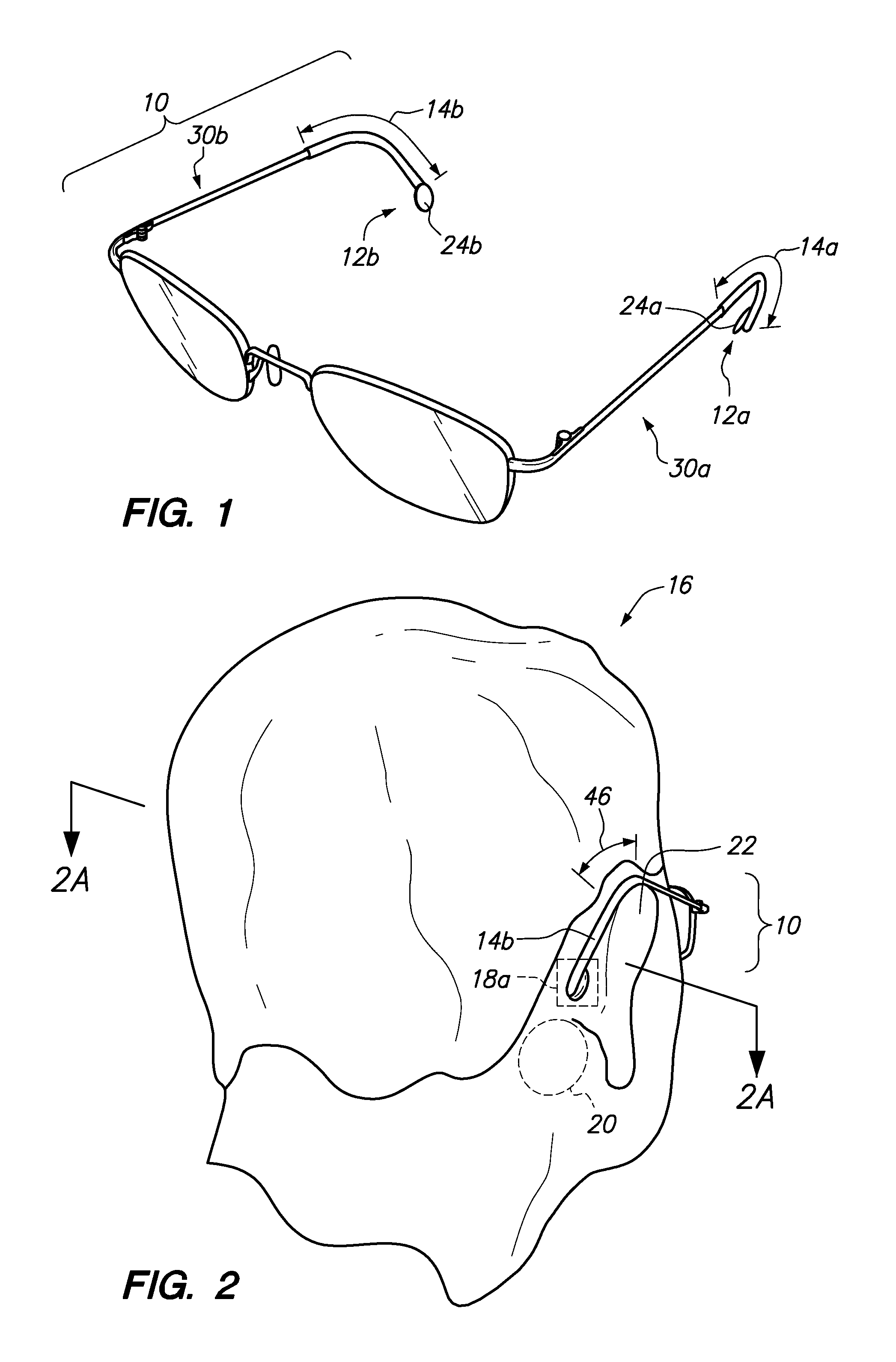Eyeglass holding device
a technology for holding devices and eyeglasses, applied in the field of eyeglasses, can solve the problems of cumbersome repetitive wear and tear of eyeglasses, prior art eyeglasses are not typically designed for secure attachment to the wearer, and achieve the effect of improving the wearer's vision
- Summary
- Abstract
- Description
- Claims
- Application Information
AI Technical Summary
Benefits of technology
Problems solved by technology
Method used
Image
Examples
Embodiment Construction
[0025]Referring now to FIG. 1, a perspective view of an eyeglass 10 is shown. The eyeglass 10 may have two extension discs 12a, b that may be attached to distal end portions of temple frame tips 14a, b. When the eyeglass 10 is worn by a wearer 16 in the use position (see FIG. 2), the extension discs 12a, b are positioned at depressions 18a, b (see FIG. 2A) above a mastoid process 20 (see FIG. 2) and behind the wearer's ear 22. The medial surfaces 24a, b (see FIG. 2A) of the left and right extensions discs 12a, b may be flat and contact the skin covering the depression 18. The friction between the medial surfaces 24a, b and the skin of the wearer at the depression 18 and the insertion of the extension discs 12a, b into the depressions 18 provide additional securement between the eyeglass 10 and the wearer when the eyeglass 10 is worn in the use position. The wearer is able to engage in active physical activities without dislodging his / her eyeglass 10.
[0026]The flat medial surfaces 24...
PUM
 Login to View More
Login to View More Abstract
Description
Claims
Application Information
 Login to View More
Login to View More - R&D
- Intellectual Property
- Life Sciences
- Materials
- Tech Scout
- Unparalleled Data Quality
- Higher Quality Content
- 60% Fewer Hallucinations
Browse by: Latest US Patents, China's latest patents, Technical Efficacy Thesaurus, Application Domain, Technology Topic, Popular Technical Reports.
© 2025 PatSnap. All rights reserved.Legal|Privacy policy|Modern Slavery Act Transparency Statement|Sitemap|About US| Contact US: help@patsnap.com



